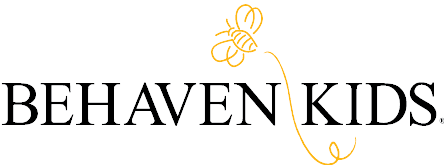
Cognitive behavior therapy, or CBT, is considered the gold standard in psychological treatment for many mental health concerns. If you or your child are about to start cognitive behavior therapy, it makes sense to want more information on what it is, how it works, and what’ll happen in sessions. So, what should you know?
In this article, we’ll discuss what cognitive behavior therapy is and how it works in depth, as well as its efficacy, uses, and what to expect.
What Is Cognitive Behavior Therapy?
Cognitive behavior therapy operates on the concept of neuroplasticity, which refers to the idea and evidence-based fact that the brain can change. The goal of cognitive behavior therapy is to modify maladaptive (unhealthy, problematic, or dysfunctional) thoughts to make them more adaptive or helpful for the client. In turn, it aids behavior change, mood, quality of life, relationships, and how a person feels about themselves, alongside other advantages. It’s about becoming friends with your brain, increasing problem-solving skills, and actively striving to rework thought patterns or behaviors that could negatively affect your life or well-being.
Whereas other forms of therapy might focus more on the root of the problem, CBT emphasizes solutions. It is not to say that you won’t go over your history with a therapist who uses CBT; you will still go over your personal history, and it will inform your treatment. However, the main goal of CBT is to empower a client in their current life to allow them to move forward, rather than focusing on the past.
How Does CBT Work?
Cognitive behavior therapy works by giving clients skills they can use long-term, even after they stop seeing a therapist. The specific skills and practices a provider uses in CBT will depend on the client’s individual needs. Clients will work collaboratively with their therapist, counselor, social worker, or psychologist to identify and define treatment goals that are relevant to the client’s presenting concerns. Then, to meet those goals, they will engage in practices such as:
- Identifying cognitive distortions (e.g., mental filtering, all-or-nothing thinking, catastrophizing, control fallacies, discounting the positive) that create problems for the client. Cognitive distortions refer to biased, irrational thoughts which can affect the way a person feels about themselves, others, or the world.
- Reframing cognitive distortions to turn them into more helpful, realistic thoughts. For example, taking the thought, “I can’t do this homework assignment; it’s too hard, I should give up,” and changing it to “Even if it is hard, I will do my best on this homework assignment and get it done.” Different techniques can be used during this process.
- Increasing confidence in one’s own abilities, in part by building problem-solving and coping skills.
- Gaining a better understanding of oneself and others.
- Using roleplaying and other techniques to prepare for circumstances that may be challenging for an individual (e.g., social interactions).
- Facing one’s fears through exposure, including letting go of avoidance behaviors.
- Learning to self-soothe.
Sometimes, negative thoughts impact our outlook or get us stuck in a loop. Other times, we don’t know how to navigate situations in our life or use unhealthy coping mechanisms. These are examples of where CBT might come in.
Uses
Now that you know what CBT is and how it works, you might wonder, “What can cognitive behavior therapy treat?” You will notice that CBT is used for a host of different concerns that affect mental and physical health. Uses of cognitive behavior therapy include but aren’t limited to the following:
- Mood disorders (e.g., depression, bipolar disorder)
- Obsessive-compulsive and related disorders
- Substance use disorders
- Anxiety disorders
- Stress
- Insomnia
- Eating disorders
- Chronic illness and pain
- Behavior problems
- Anger
CBT can be tailored to treat different concerns, which is part of why it’s so widespread. For example, you might see cognitive behavior therapy for insomnia (CBT-I) used to help those who experience trouble falling or staying asleep. The specific techniques a counselor, therapist, social worker, or psychologist uses when they work with a client will depend on what that client needs.
So, it isn’t that CBT is a “one-size-fits-all” approach. Instead, there are subtypes of CBT designed to tackle the unique matters that individual clients experience. Similarly, since clients of nearly any age can engage in CBT, the age group will be considered when determining how to effectively utilize CBT to reach treatment goals. For example, young kids may pursue CBT combined with play therapy.
Is CBT Effective?
Cognitive behavior therapy has been around since the 1960s, and it has continued to grow and adapt ever since. From that point onward, thousands of research studies have been conducted on CBT. These days, cognitive behavior therapy is the first line of treatment for many mental health conditions and concerns. In other words, it’s often the first recommended treatment option a client will encounter. This is because CBT has a high success rate for matters such as those listed above.
For example, a 2018 study on youth ages 11-21 with anxiety disorders found that CBT was effective in reducing symptoms of anxiety long-term. Some participants had such success with CBT that they no longer met the criteria for an anxiety disorder after treatment. Participants experienced positive effects with both individual CBT and group CBT.
Similar results are found in studies looking at CBT for depression, obsessive-compulsive disorder, and other mental health concerns. A strong body of research shows that CBT leads to significant improvements in quality of life and functioning in those who pursue it for a host of different reasons.
In many studies comparing CBT to other forms of treatment, we see that CBT is either more effective than or just as effective as other forms of treatment, including both medications and other therapies. That isn’t to say that medication and other therapies aren’t effective – they certainly are! Instead, it highlights that CBT is a highly effective treatment option.
Like other forms of therapy, it is also worth noting that CBT can be combined with other treatments, like medication, to produce the most favorable effects. Whether this is or isn’t the case depends on the unique client.
What To Expect In CBT
What to expect in CBT depends on your therapy goals and the provider you or your child work with. It also depends on whether CBT is conducted in a group setting, individual setting, or otherwise. All in all, CBT is usually a short-term form of treatment, though techniques can be used for those who work with a therapist for longer periods of time. It is non-invasive, safe, and collaborative. While CBT is effective for many people, there are CBT alternatives to consider if it isn’t the right fit for you, your child, or your family. Finding the right therapist is just as important as the type of therapy a client pursues, so it is vital to find a professional you or your child connect to and are comfortable with.
Get Started With Behaven Kids
When you set out to find a therapist, you deserve to find a compassionate, informed provider who listens and works to understand their clients. That is where we come in. Behaven Kids offers cognitive behavior therapy and other therapies for children and their families. We start with an intake assessment that helps us gauge your child’s needs and goals.
To learn more, fill out the contact us form on our website or give us a call at 402) 926-4373 to schedule your free consultation and tour.



